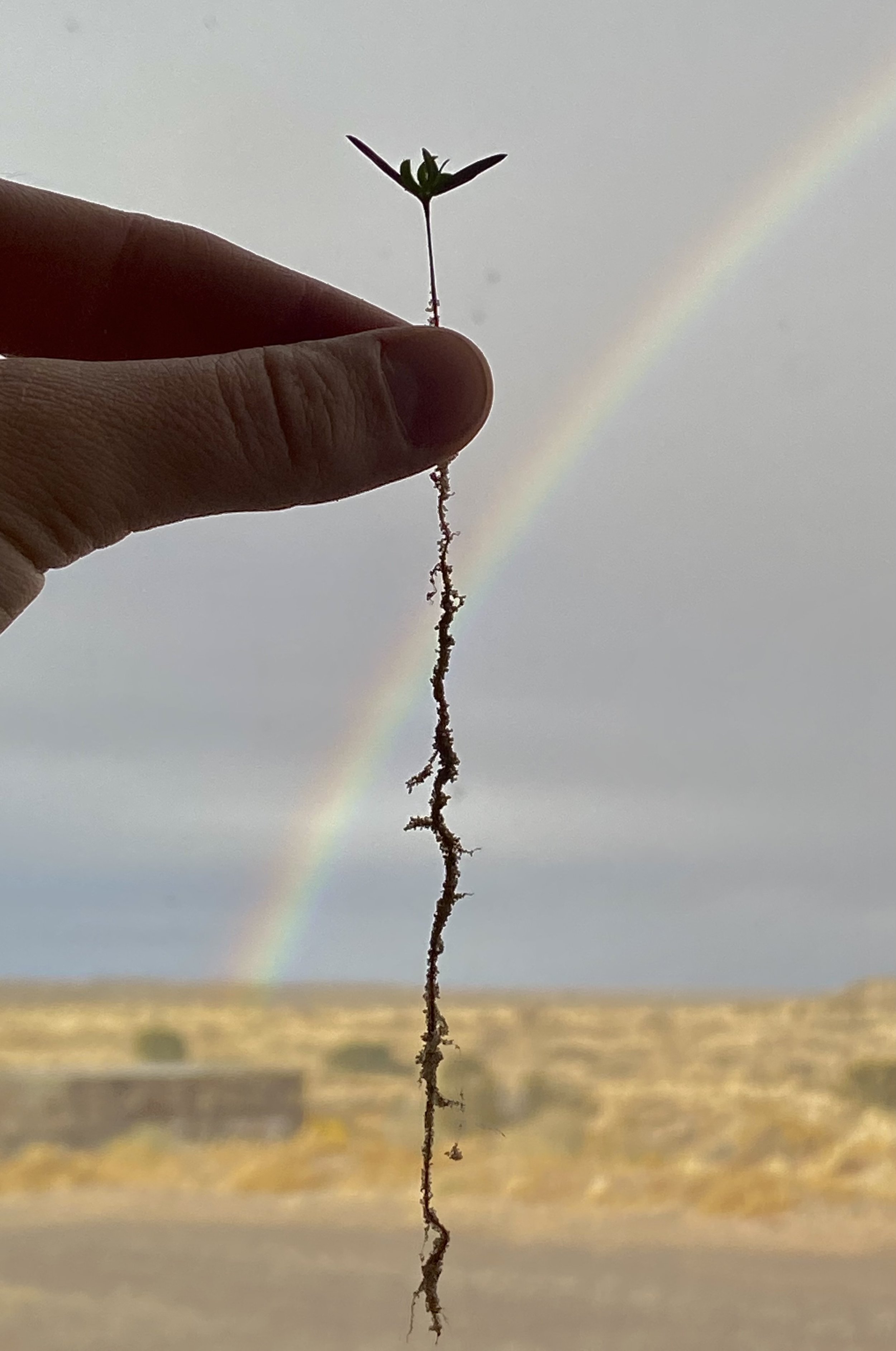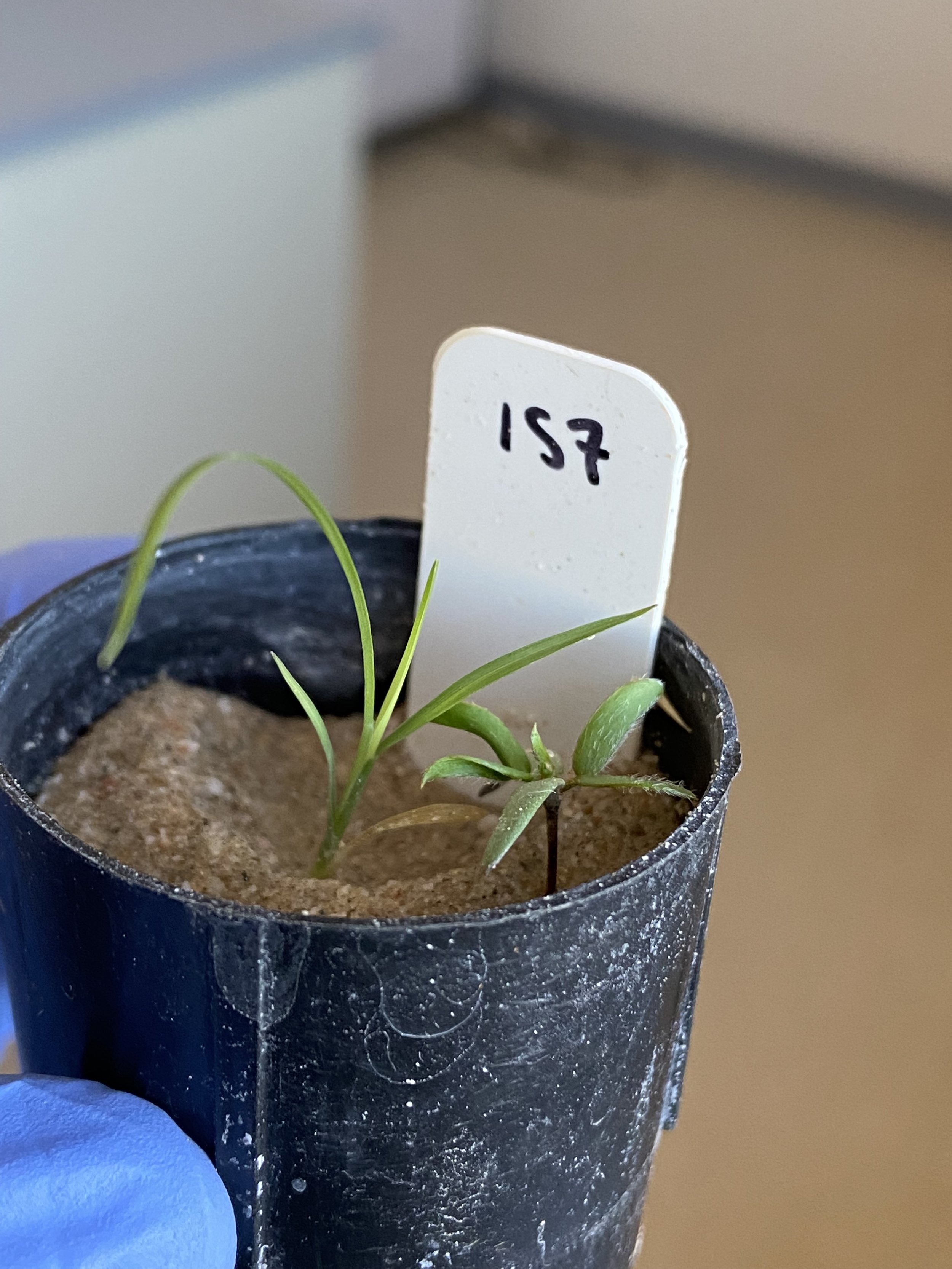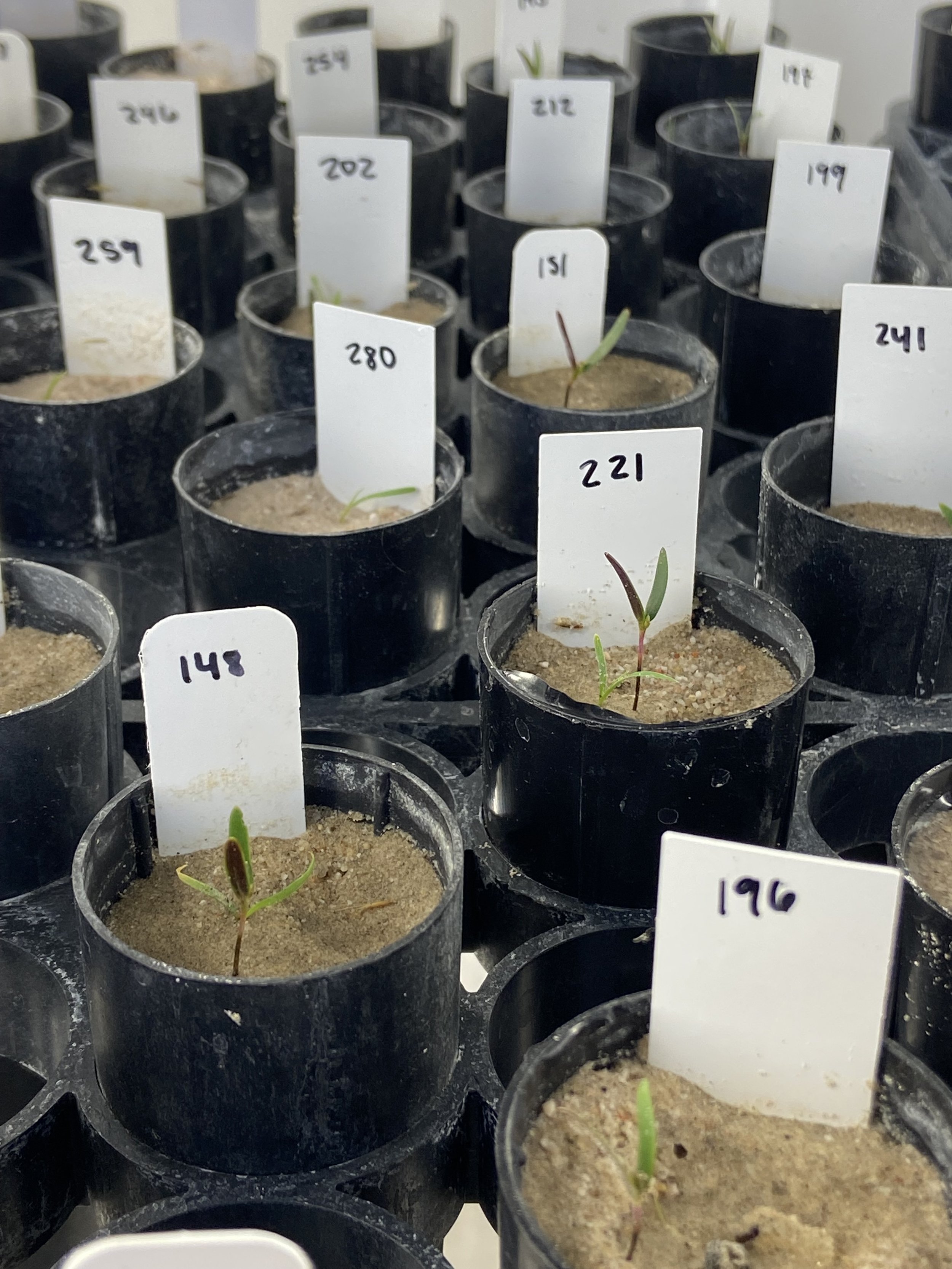Plant-Soil Feedbacks: A Look Into the Effects of Microbes as CO2 Levels Rise
Roxanne Márquez, B.S. Biology & Dr. Jennifer Rudgers
Department of Biology UNM 2021

creosote seedling

dark septate endophyte fungi inside of grass root

black grama and creosote seedlings
Background
Shrub encroachment into grasslands has been increasing worldwide, including New Mexico Chihuahuan Desert ecosystems, and this is predicted to increase as CO2 levels rise. The landscape scale pattern of shrub encroachment in the Chihuahuan Desert is due to the spatiotemporal dynamics of coexistence between creosote shrub, Larrea tridentata, and black grama grass, Bouteloua eriopoda. Competition between these two species may be invisibly influenced by plant-soil feedbacks, in which plant species affect each other indirectly through their species-specific microbiomes.
For this project, we ask:
How do species-specific microbes influence plant-soil feedbacks between creosote and black grama under elevated CO2?
Investigating this question can give us better insight into how plant-soil microbiomes can invisibly influence species coexistence both interspecifically and intraspecifically.

fungi!

experimental setup inside growth chamber

fungi!

fungi!
Experimental Design
One creosote seedling and one black grama seedling were grown together in each sterilized pot with sterilized sand. There were 6 different fungal treatments and one control treatment of sterilized sand (20 pots per treatment). The 6 fungal treatments involve 3 species of fungi cultured from creosote roots and 3 species cultured from black grama roots.
Additionally, half of the sample set was grown in ambient CO2 conditions while the other half of plants were subjected to elevated CO2 at 550ppm.
This experiment involved two trials. The first trial contains soil treatments (soils collected from under creosote or black grama) in addition to fungal treatments, while the second trial focuses solely on fungal treatments.
Contact me if you want to learn more about this project or discuss the results!